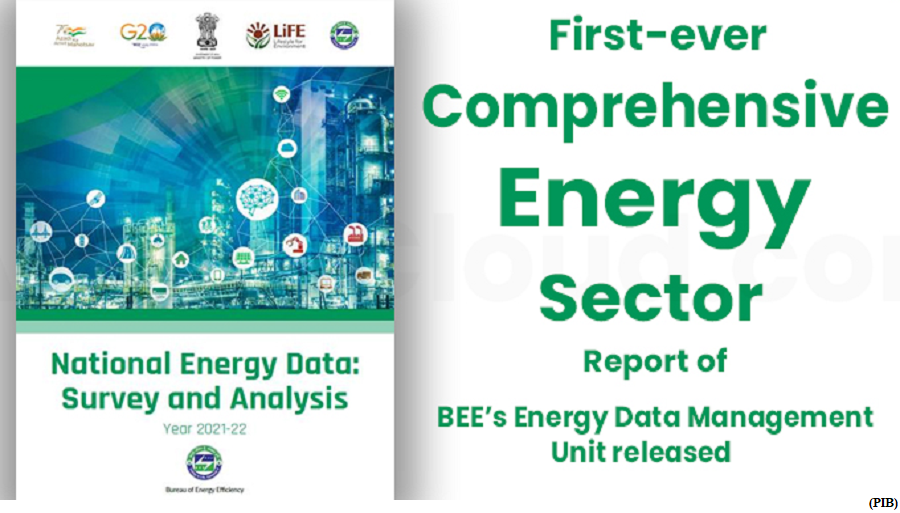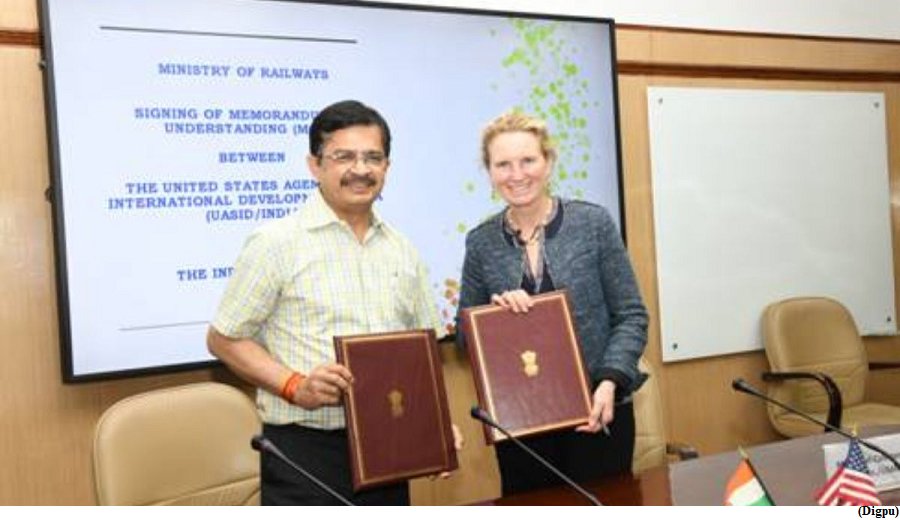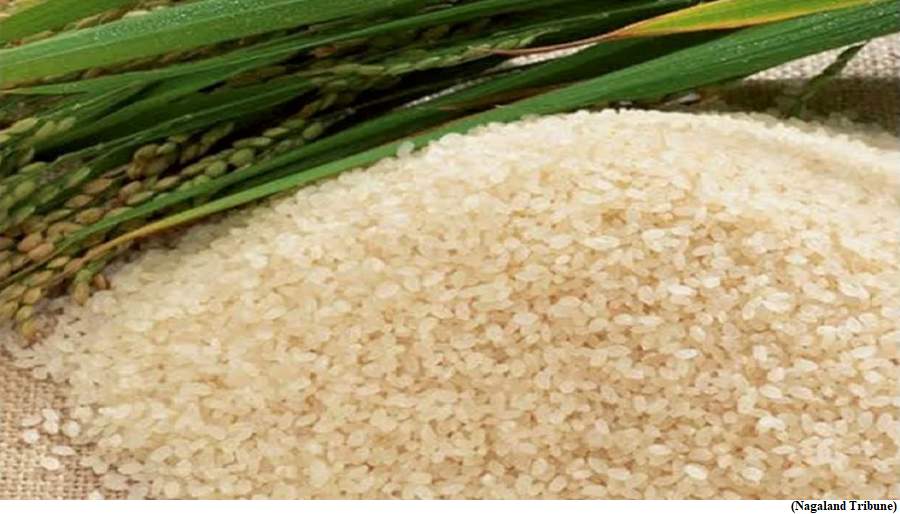First ever Comprehensive Energy Sector Report of BEE Energy Data Management Unit released (GS Paper 3, Environment)

Why in news?
- Recently, the Union Ministry of Power has come out with a comprehensive energy sector report titled ‘National Energy Data: Survey and Analysis 2021-22’.
- It is the maiden report of Energy Data Management Unit, set up under Bureau of Energy Efficiency, Ministry of Power.
Details:
- It provides granular information about energy supply and consumption patterns across various sectors of the Indian economy.
- The report contains extensive data compiled for the last six years, i.e., from FY 2016-17 to FY 2021-22, along with trends and analysis of fuel-wise energy consumption in major end-use sectors.
- It also provides an overview of the impact of various energy conservation policies and their associated carbon dioxide emission reduction and monetary savings.
- It has been prepared by Ministry of Power through Bureau of Energy Efficiency in collaboration with NITI Aayog, various line Ministries and Departments, institutions, and other stakeholders.
Key Highlights:
Value Addition
- This report provides granular fuel-wise energy consumption data for various sectors. This detailing will enable a better understanding of the energy profile of various sectors, sub-sectors and consumer groups.
- The use of distinct conversion factors (of domestic coal and imported coal) for different years based on different calorific values of coal gives a realistic picture of coal-based energy supply and consumption in the country.
- In the latest edition of 2023 Report of Ministry of Statistics & Programme Implementation, the conversion factors of coal have been derived using a weighted average methodology rather than using a single representative GCV for all grades of coal.
- It also provides an overview of the impact of various policies on energy savings and CO2 emission reduction with corresponding monetary savings.
New Insights:
- Energy supply to economy during last six years is actually less by 18%; this has been found out by using Indian coal conversion factors, rather than IEA conversion factors which has been used before
- Lower energy consumption value by 8% in 2021-22.
- Increased share of electrification on consumption side to 20.9%.
Way Forward:
- The information provided in this report will help in assessing the status of data availability of various energy products in the country.
- It can also help in analysing energy intensity of the country thereby enabling policy makers to formulate robust policies and carry out course corrections.
Indian Railways signed MoU with United States Agency for International Development/India (USAID/India)
(GS Paper 2, International Relation)
Why in news?
- Indian Railways (IR) is proactively working towards the achievement of Net Zero Carbon Emission by 2030. IR has strategized multipronged approach.
- Recently, a Memorandum of Understanding (MoU) was signed between Indian Railways, Government of India and United States Agency for International Development/India (USAID/India) for collaboration on Renewable energy and Energy Efficiency.

Key Highlights:
- Through MoU, technical assistance and support would be provided to Indian Railways. The MoU broadly includes but not limited to the following areas:-
- Long-term energy planning including clean energy for Indian Railways.
- Develop an Energy Efficiency Policy and Action Plan for IR Buildings.
- Planning for clean energy procurement to achieve Indian Railways’ net-zero vision.
- Technical support for addressing regulatory and implementation barriers.
- Bid design and bid management support for system-friendly, large-scale renewable procurement.
- Supporting Indian Railways in the promotion of e-mobility.
- Collaboratively host events, conferences, and capacity-building programs in the mentioned identified areas including field visits and study tours (domestic/international).
Way Forward:
- The collaboration of Indian Railways with USAID, India will go a long way in helping Indian Railways to achieve Net Zero Carbon Emission by 2030.
About USAID:
- USAID (United States Agency for International Development) is an agency of the U.S. Government that supports international development and advances its Mission objectives by supporting economic growth, agriculture and trade, clean energy, climate change mitigation and adaptation, global health, democracy and conflict mitigation and management, and humanitarian assistance.
Joha rice, the Nutraceutical of choice in diabetes management
(GS Paper 2, Health)
Why in news?
- The scientists at the Institute of Advanced Study in Science and Technology (IASST), has explored the nutraceutical properties of aromatic Joha rice.

Joha rice:
- Joha rice, aromatic rice cultivated in the Northeastern region of India is effective in lowering the blood glucose and preventing diabetes onset and hence is an effective nutraceutical of choice in diabetes management.
- Joha is a short-grain winter paddy known for its significant aroma and noteworthy taste.
- The traditional claims are that the consumers of Joha rice have low incidence of diabetes and cardiovascular diseases, but these needed scientific validation.
Nutraceutical properties of aromatic Joha rice:
- Through in vitro laboratory analysis, they detected two unsaturated fatty acids viz., linoleic acid (omega-6) and linolenic (omega-3) acid. These essential fatty acids (which human cannot produce) can help maintain various physiological conditions.
- Omega-3 fatty acid prevents several metabolic diseases such as diabetes, cardiovascular diseases, and cancer.
- Joha has also proved to be effective in lowering the blood glucose and preventing diabetes onset in diabetic rats.
- The scented Joha rice has a more balanced ratio of omega-6 to omega-3 in comparison to the widely consumed non-scented variety. The ratio of omega-6 to omega-3 essential fatty acids (EFA) of required by human beings for maintaining the proper diet is around one.
- They have used this Joha rice to make rice bran oil, a patented product that they claim to be effective in diabetes management.
Bioactive compounds:
- Besides, Joha rice is also rich in several antioxidants, flavonoids, and phenolics.
- Some of the reported bioactive compounds are oryzanol, ferulic acid, tocotrienol, caffeic acid, catechuic acid, gallic acid, tricin, and so on, each with reported antioxidant, hypoglycaemic and cardio-protective effects.




